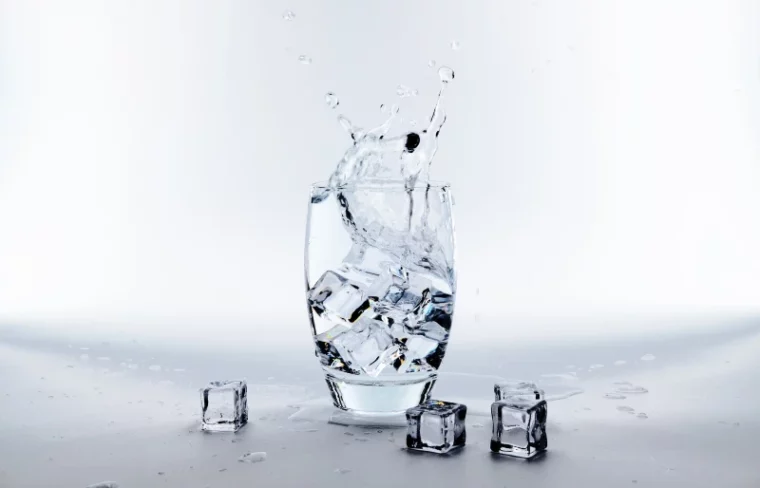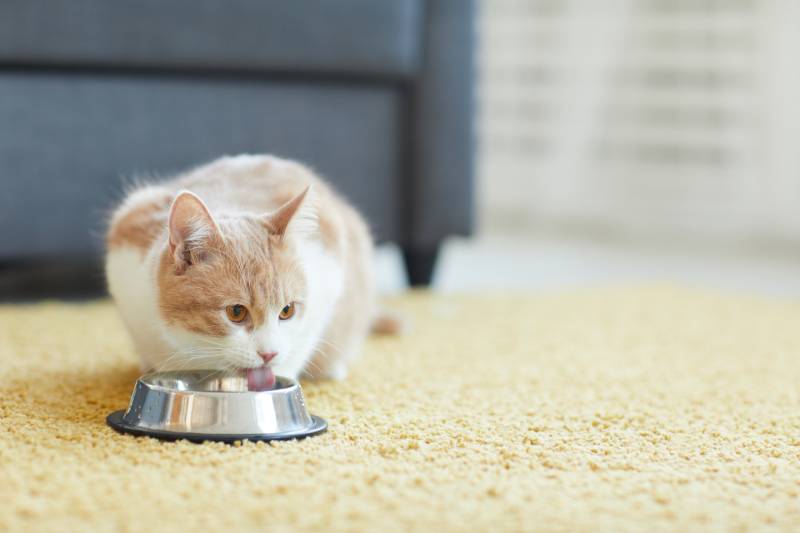
Loving cat owners always try to find novel ways to pamper their pets, and the daily meal is a perfect place to start. After upgrading to the finest food possible, what can you do with the water dish? Will mineral water make a practical addition to the diet, or should you stick with regular tap water?
The choice is up to you. Cats can certainly drink mineral water, and may even enjoy it, but are the benefits worth the price tag? To help you make the most practical decisions, let’s discuss if cats can drink mineral water and whether you should make it part of their routine.
What’s In Mineral Water?
Mineral water comes from known, underground sources that are certified safe for human consumption, undergoing minimal processing before it hits the store shelves. Unlike tap water, mineral water doesn’t receive chemical treatments. The water reaches you in a pure form full of hard water minerals like calcium, magnesium, sodium, and potassium in guaranteed safe values. The mix of beneficial nutrients can help control digestive function, strengthen bones, improve circulation, and promote heart health.

Can Cats Drink Mineral Water?
Cats can drink mineral water without experiencing any health issues. Mineral water supplies vital nutrients to support your cat’s health and may taste better, making it potentially preferable to tap water.
Carbonated Mineral Water
Many mineral waters have natural carbonation or receive additional CO2 during processing. The effervescence in these sparkling mineral water varieties is safe for your cat, and the ongoing bubbling action could entice them to drink. But while it may entertain them, cats might find the sensation of drinking carbonated water off-putting. In excess, sparkling water can also cause bloat and subsequent discomfort and sluggishness.
Flavored Mineral Water
Flavored water may or may not tempt your cat. Cats lack the sweetness receptors to make them appreciate the taste, and added sugars won’t do anything positive for their health. You could infuse the mineral water with fruits, a healthier option to coax them into drinking. The risk is that your cat may become too fond of the fruity essence, causing them to refuse ordinary water later. Your best move is to play it safe and only offer unflavored water.

Should You Be Giving Your Cats Mineral Water?
Mineral water is consistently high-quality, leaving little concern for cats drinking it. Still, no conclusive evidence suggests mineral water is healthier or safer than tap water. Cats are unlikely to display much preference between them. If they do show disinterest in tap water, you can typically resolve any odor or taste issues with a basic filter system. All the while, you’ll save money and effort.
There has been speculation that offering cats mineral water may reduce their risks of developing urine crystals and calculi, but there is no scientific evidence to support this claim.
Mineral Water and Microplastics
By giving your cat tap water, you’ll reduce your plastic consumption, which may be the most critical reason to choose it over mineral water for your cat. Microplastics are top of mind for many consumers today. As plastics break down, they never completely disappear. Instead, they degrade into minute plastic particles that fill our oceans, soil, and groundwater, eventually flowing back to our food and water sources.
While the total effects of microplastics are still not completely understood, experts warn that they can introduce toxins into the body, causing oxidative stress and inflammation. And alongside the microplastics already in the unfiltered water, mineral water receives even more from its container. While most tap water now contains small amounts of microplastics, bottled water’s microplastic concentration is over 20 times higher!
Considering that purchasing bottled mineral water also perpetuates the growing plastics problem, it’s far from eco-friendly. If you must use a bottle, some are better than others. You can opt for BPA-free and PET plastics products, or skip the plastic and pick glass or paper packaging. But while these bottles may be safer, they still take energy to produce and ultimately end up in landfills. No matter the product, tap water will always be a more sustainable choice.

How to Get Your Cat to Drink More Water
Staying hydrated maintains your cat’s temperature, organ function, circulation, digestion, and much more. Cats can only survive 3–4 days without water, with the ill-effects of dehydration starting well before that. Early signs of dehydration may include lethargy, decreased appetite, and dry mucous membranes. Although healthy cats will self-regulate their water intake, they may sometimes need encouragement to get their fill.
If your cat is fussy about their water, switching to bottled mineral water shouldn’t be your first move. Perceived cleanliness issues may be the problem, and you can often resolve them without giving up tap water. Here are a few possible ways to encourage your cat to drink more:
Decreased thirst and appetite can indicate several underlying health conditions, especially if all other potential environmental factors have stayed the same. Before making significant changes to the routine, discuss your cat’s changing behavior with your vet. They may offer unique insight based on your cat’s history or perform a checkup to root out any health issues.
Equally, if your cat suddenly starts drinking (and urinating) a lot more than they used to, a health check is in order.
Final Thoughts
Cats can certainly drink mineral water, but there is unlikely to be any real benefit to them doing so. It’s an expensive way to hydrate your cat, and the plastic is much less eco-friendly than plain tap water. For cats, the benefits don’t outweigh the costs. They won’t perceive the health benefits nor notice a taste difference, and a simple filtration system will often overcome any objections to water from the faucet. Stick with tap water, but don’t worry about serving mineral water to your cat if it’s all you have.
Featured Image Credit: Bru-nO, Pixabay








